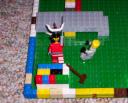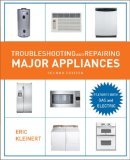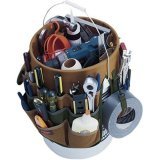Most appliances today use electronic circuit boards. For example, many appliances use an “electronic control system” consisting of a dime-store calculator LCD display, a plastic touch pad, and a cheesy circuit board, all made in a Chinese sweat shop. Although these boards are manufactured for pennies, replacement circuit boards sell for big bucks, sometimes hundreds of dollars, and are the single most profitable replacement part that any appliance manufacturer sells.
Electronic circuit boards in wet appliances violate the 5th Law of the Prophecy: Electronics and wet appliances do not mix. Nevertheless, it’s hard to find a washing machine, dishwasher, refrigerator, or dryer today that doesn’t use circuit boards for the user interface. And they’re here to stay so like it or not, we better get used to ’em. Hence the raison d’être for this article. 
Here are some all-too-common examples of how you’ll use your new-found circuit board skills in appliance repair:
If you’re going to attempt to repair a circuit board, you need to first understand that, in the course of trying to repair the board, you may accidentally inflict collateral damage to the board. The risk of collateral damage is inversely proportional to your soldering skill and how carefully you handle the board. In other words, as your skills in handling and soldering circuit boards increase, the risk of accidentally damaging the board decreases. YOU, and you alone, are responsible for whatever happens, good or bad, to the circuit board while it’s in your hot little hands. If you’re not prepared to take the blame– as well as the accolades– for whatever happens with the broken circuit board you’re thinking about fixing, then don’t even start! I recommend that you practice– a lot!– on an old circuit board before going live on the real thing.
You need to practice two basic techniques: soldering and desoldering. I’m not going to get into the nuances of making a good solder joint– there are lots of references for this all over the Internet, like this one. So rather than bore you with long, tedious descriptions of how to solder and desolder, what you really need are pictures demonstrating the techniques. And, hey, looky-here at what I just happened to have…
And, for your convenience, here’s a shopping list of the basic tools you’ll need:
Handling Electronic Circuit Boards
Many electronic boards are static sensitive. This means that the static electricity naturally present on your body can fry the delicate little IC chips on the circuit board. Always wear an antistatic wrist strap and ground yourself before working with electronic control boards. Always handle boards by the edge and don’t touch discrete components on the board.
and ground yourself before working with electronic control boards. Always handle boards by the edge and don’t touch discrete components on the board.
Awwite, Tron, go dab some molten lead on a circuit board. 
![]()




